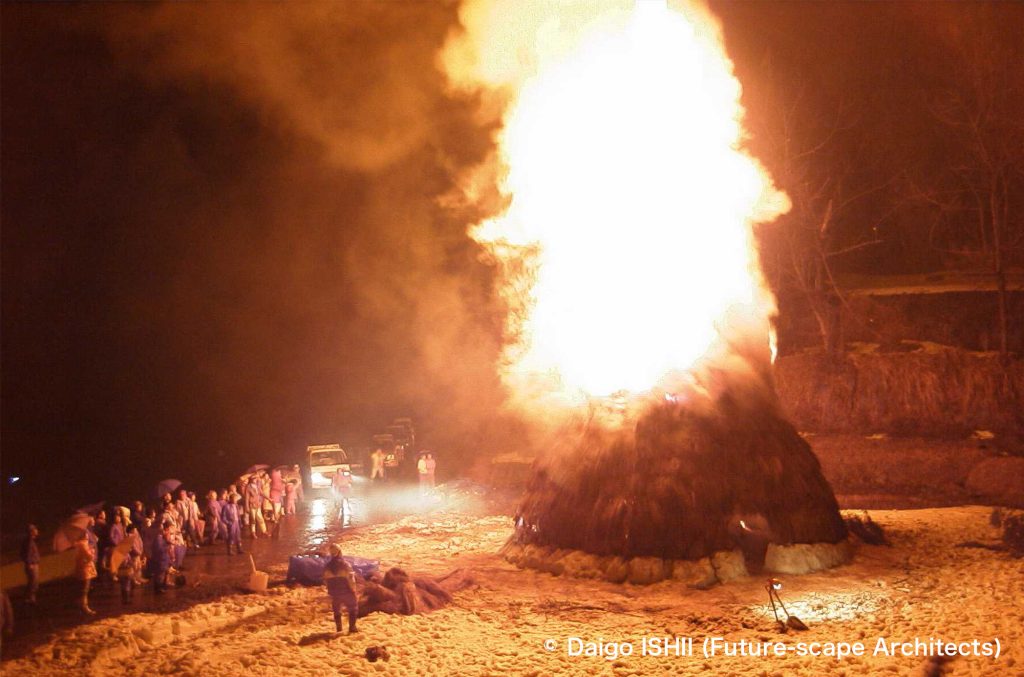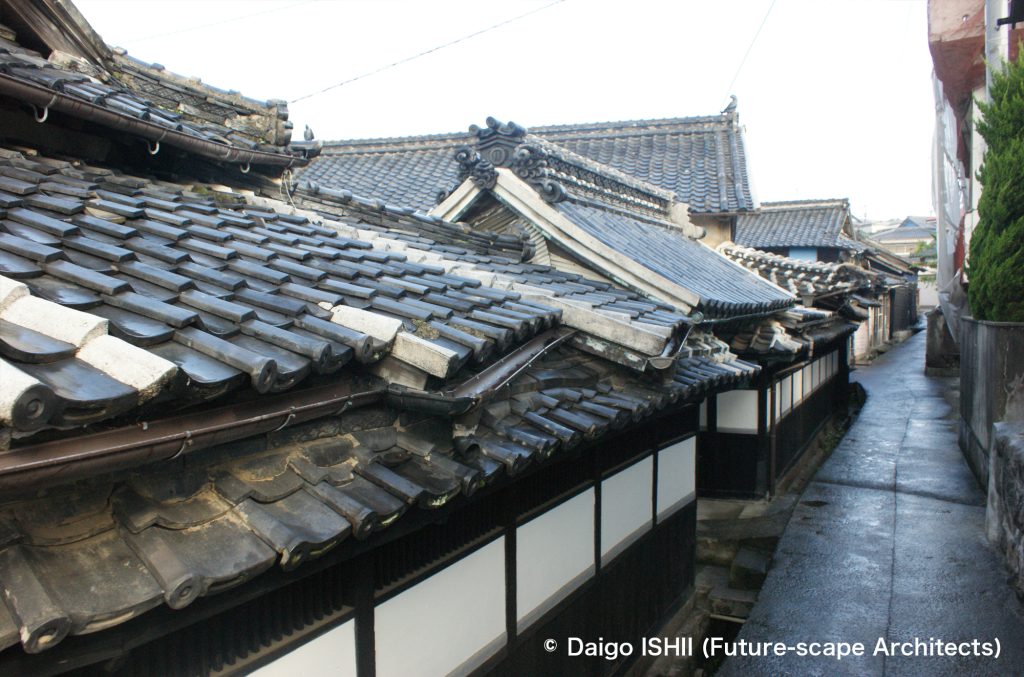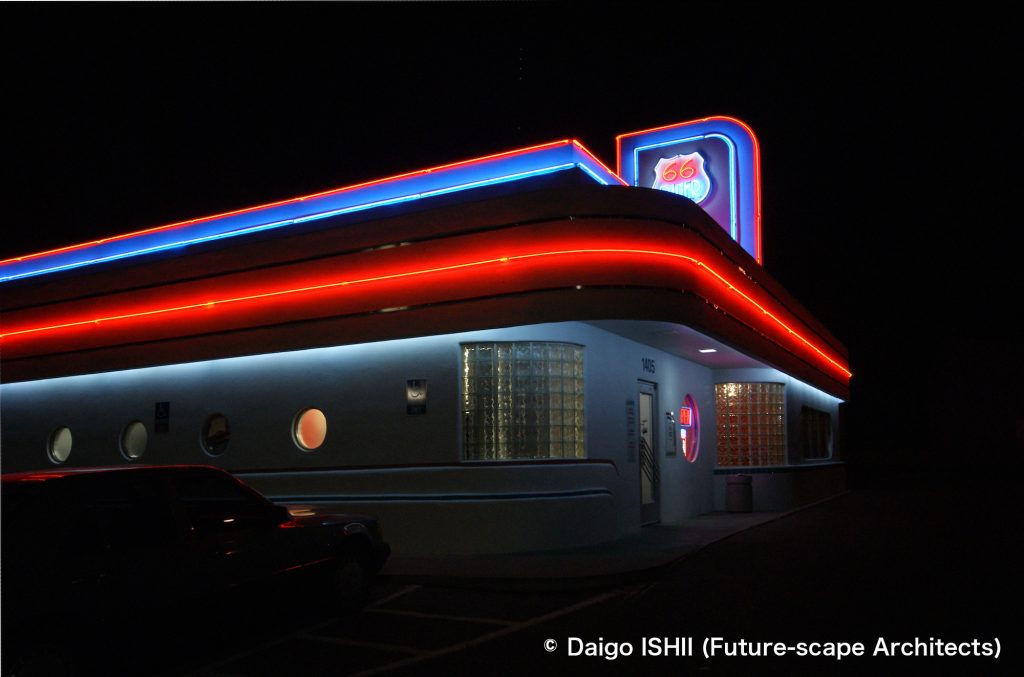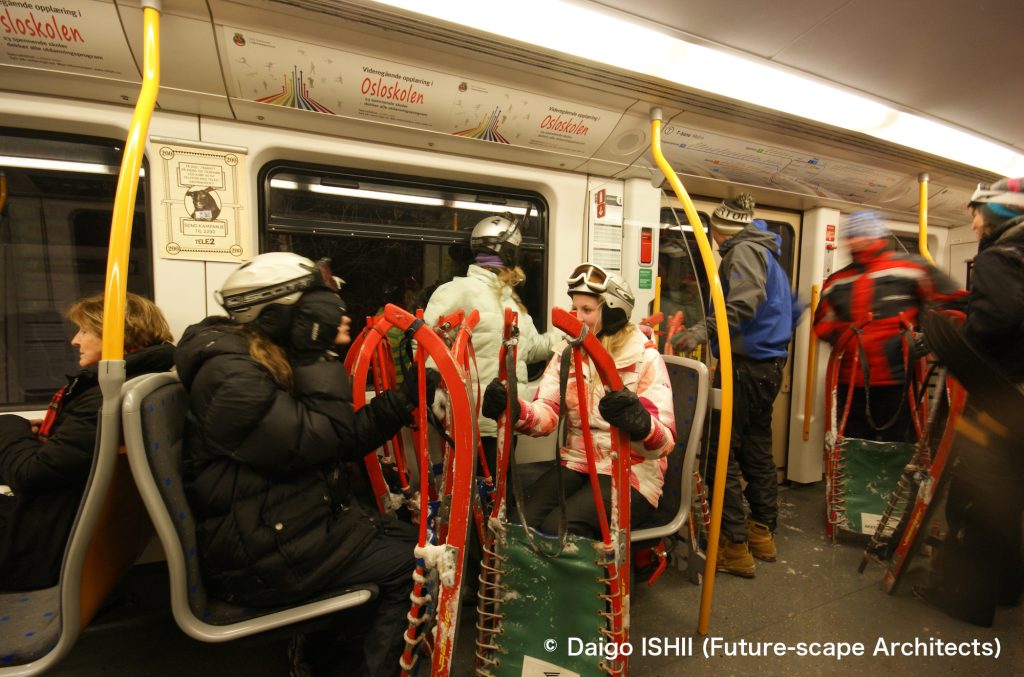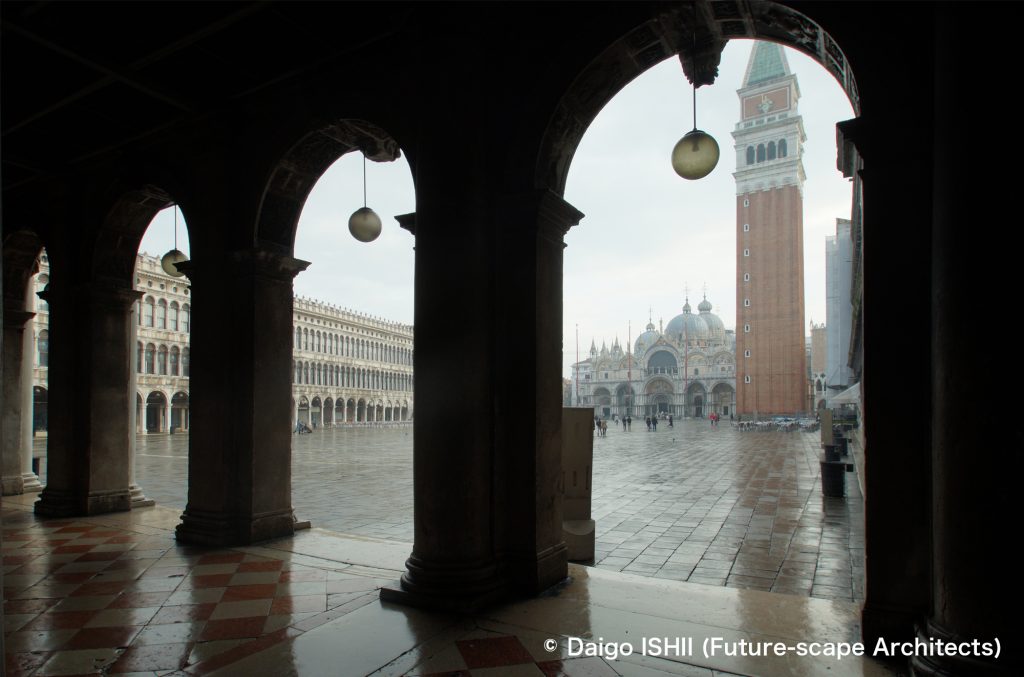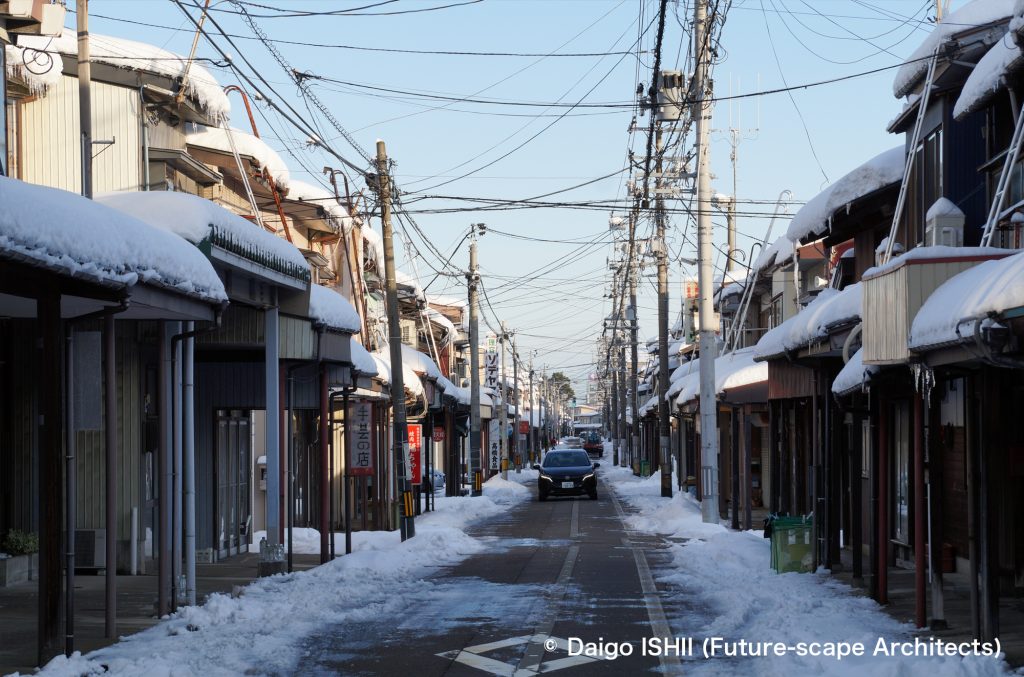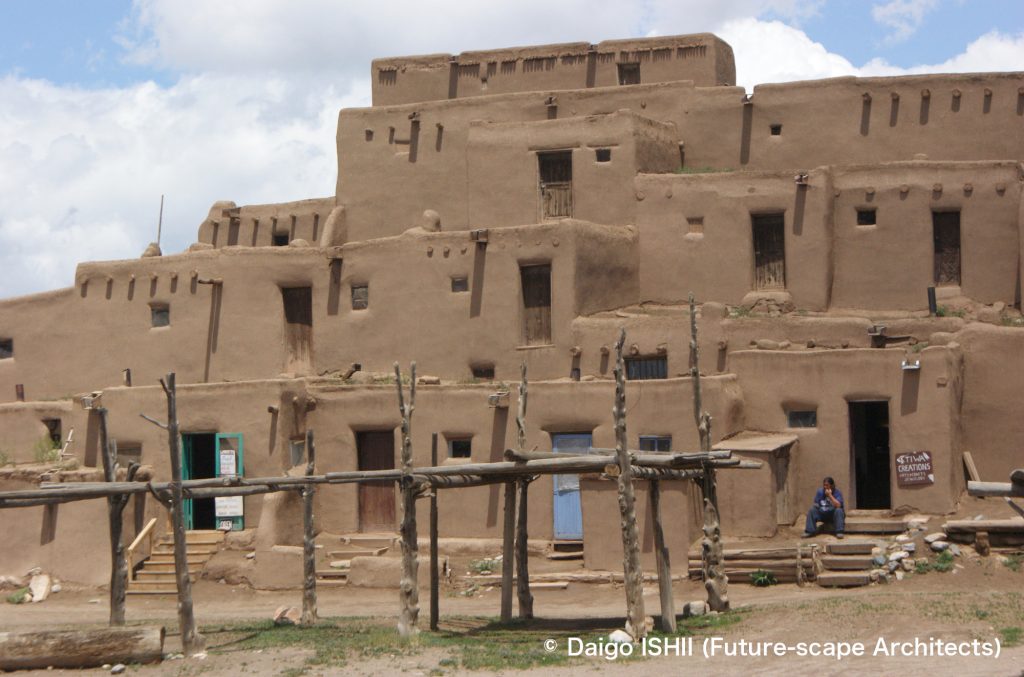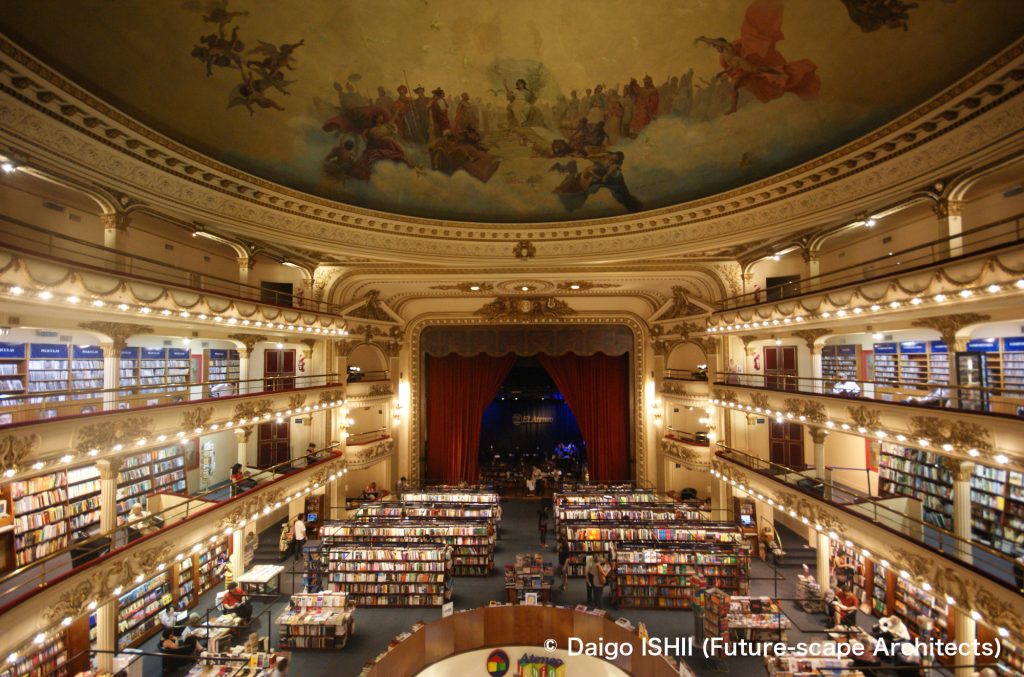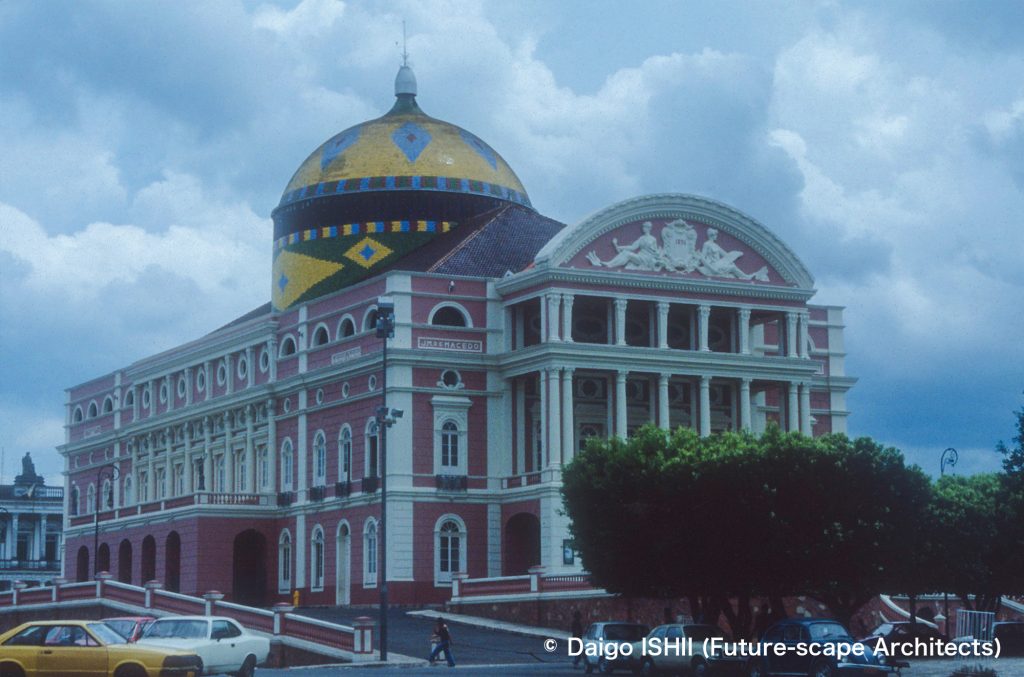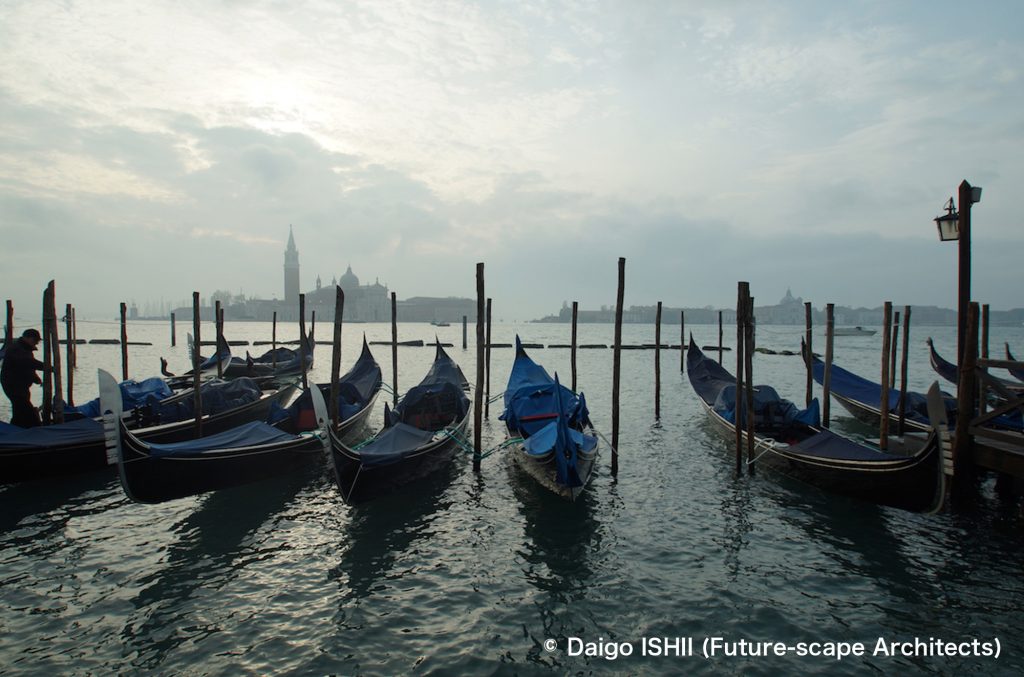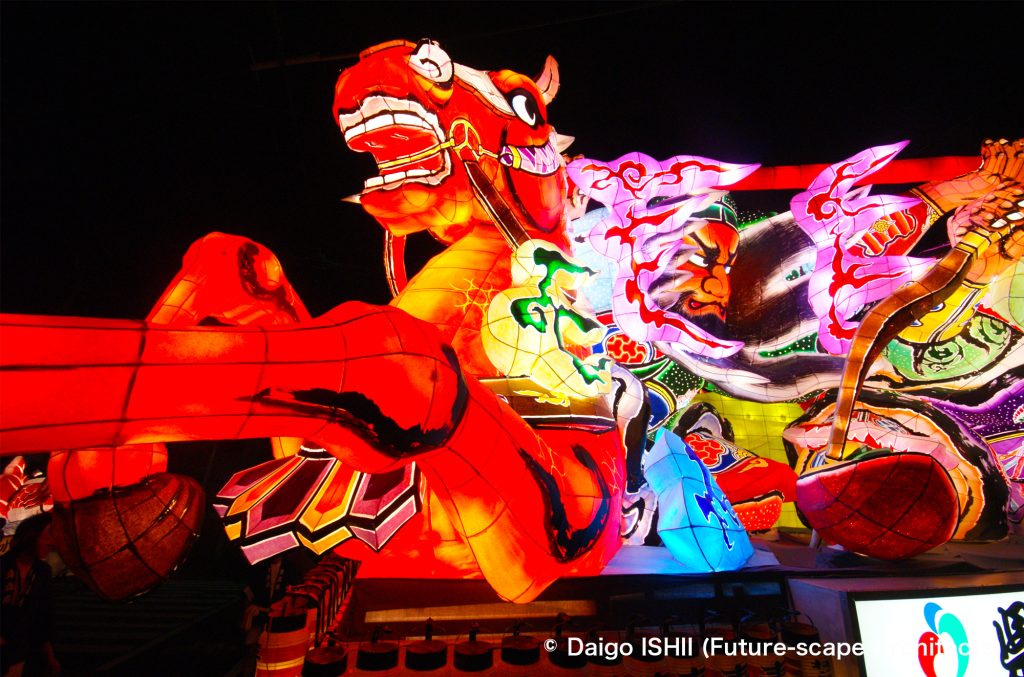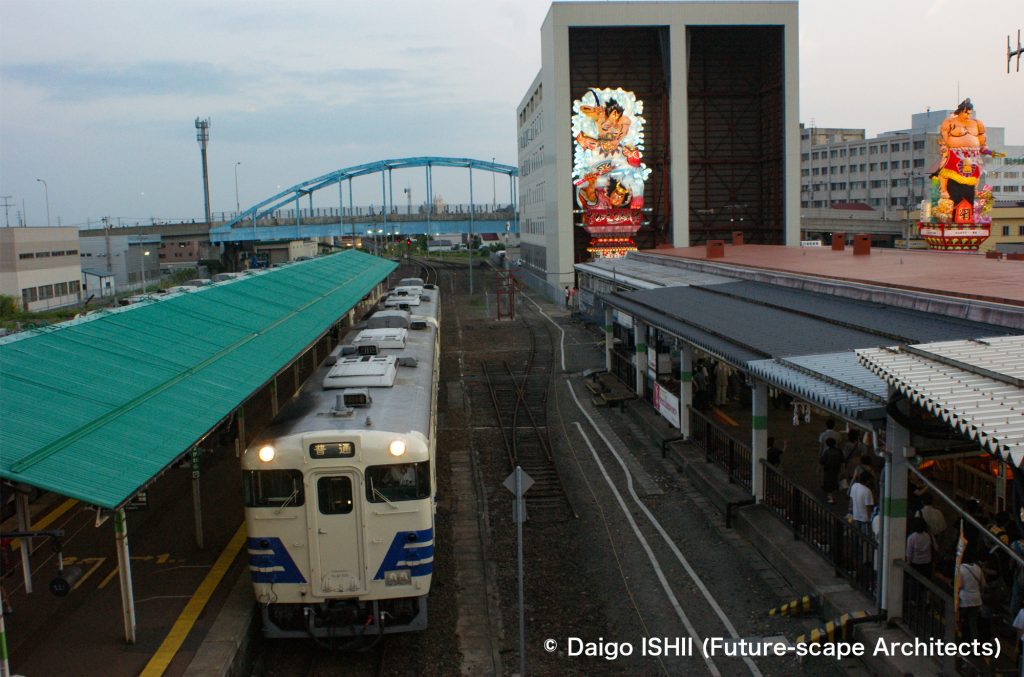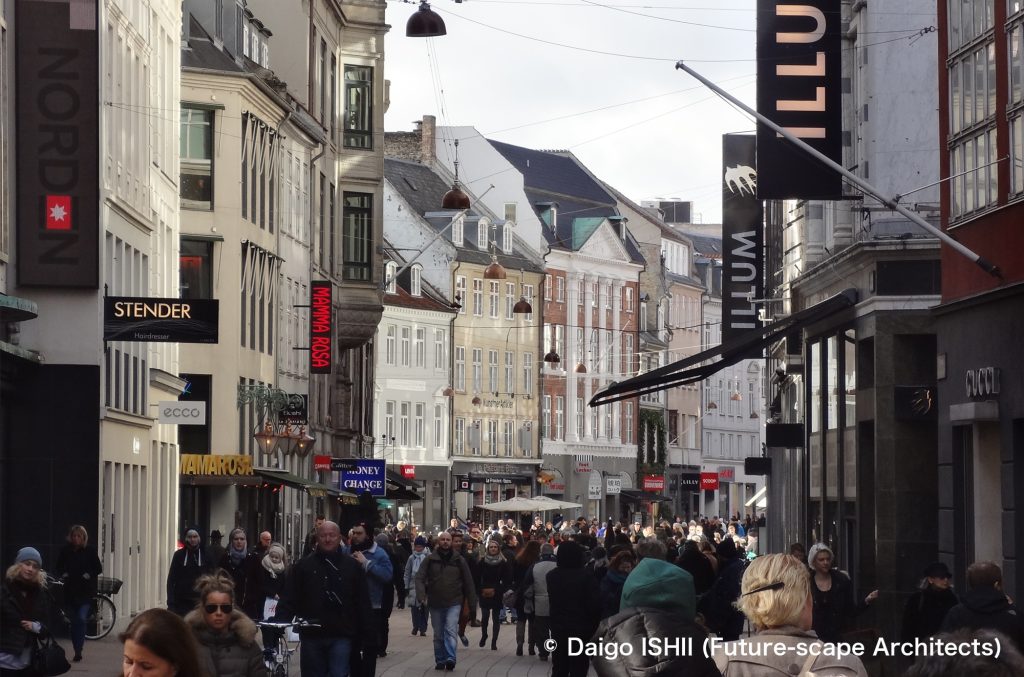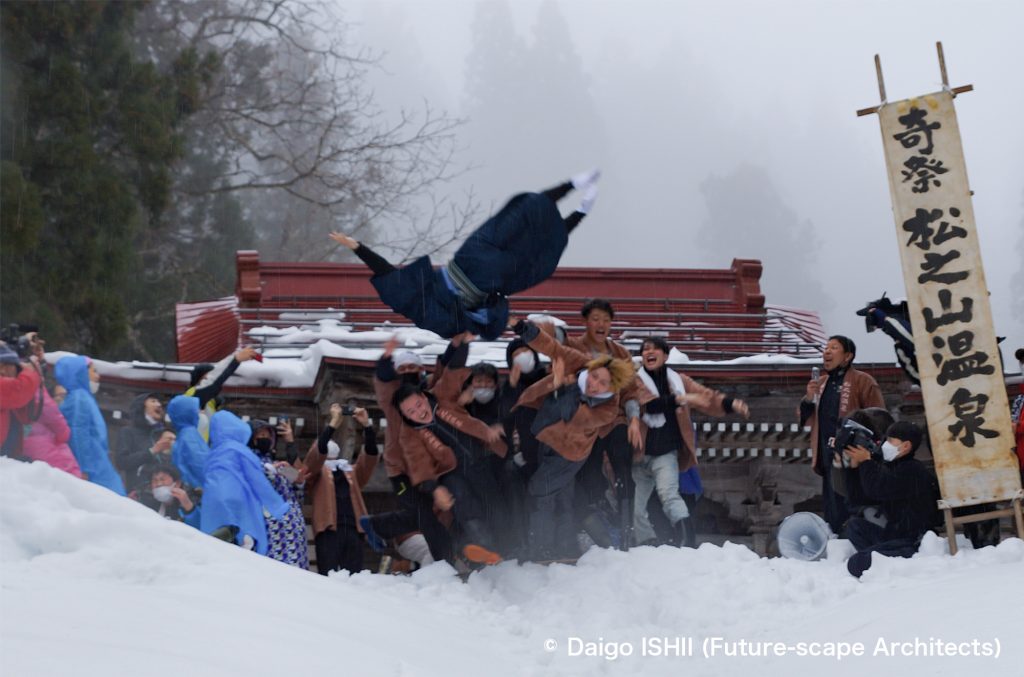British photographer Johnny Hymas' photo book "Tambo (Rice field)" is a collection of photographs of rice fields taken during his travels in Japan. He took about 1/4 of them in Tsumari's rice terraces. Tsumari seems to represent Japan's agricultural landscape.
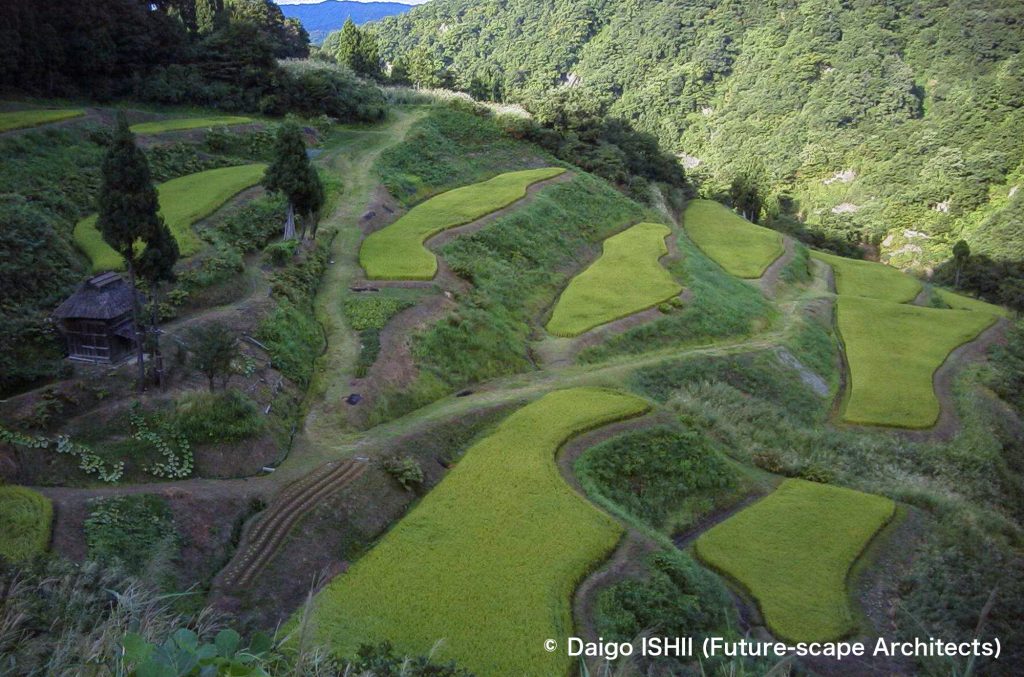
https://goo.gl/maps/cP3s5tb3sM1XiaNt9
Villages in semi-mountainous areas with little flat land created rice terraces to secure rice. Gentle slopes that caused by landslides played a key role. In 1962, a large-scale landslide occurred in the area of nearly 10% of the Matsunoyama district in Tsumari. In the 1980s, landslides frequently occurred, including in Matsunoyama and Matsudai districts, and it was said that those districts would become uninhabitable. The reason was that clay strata formed by folds and faults tended to absorb water, the angle of the water-impermeable tuff stratum below it was similar to the landslide angle, and groundwater level rose when the snow melted due to heavy snowfall. In the old days, when people could not achieve a large-scale land alteration, the landslide, which created a gentle slope, resulted in rice terraces as agricultural land.
Interestingly, the landslide-prone gentle valley strata and the landslide-resistant mountain strata are disposed in parallel from the northeast to the southwest in the Matsunoyama and Matsudai districts. Rice terraces and villages are located on a gentle valley on that axis.
The rice terraces that have been carefully maintained over time have environmental benefits such as beautiful agricultural landscapes and rainwater adjustment. On the other hand, due to poor labor efficiency, aging and depopulation, the abandonment of cultivation doesn't stop. For 25 years since I visited here for the first time, some rice terraces wasted, and farm field development changed beautiful irregular contour lines into a shape of a lattice. That was unfortunate, but farm field development may be a resolution of the survival of rice terraces.
For a long time, the rice cultivated on the flat Shinano River terraces in the Kawanishi district of Tsumari had been selected as the best-tasting rice in Japan. The temperature difference between the morning and the night in the summer and the fog of the Shinano River produced it. Locals say that rice cultivated on the rice terrace grows with a limited amount of water and fertilizer, and the yield per area is low, so the taste is better. I haven't tasted the rice from the rice terrace few times, so I can't say anything about it. First and foremost, it's difficult to get hold of it. Furthermore, rice sun-dried on Hasagi (wooden bar) makes the taste even better. Since rice sun-dried needs a lot of work, the farmers themselves mainly consume Hasagi rice. The Hasagi rice, which my friend gifted me, was exceptionally delicious, so I guarantee its effectiveness. The price of Hasagi rice is two times more expensive than the normal price. If a rice is grown on a rice terrace and is dried on Hasagi, the price will be so premium that ordinary people cannot purchase.
Though the transaction price of rice produced in Tsumari is expensive, full-time farmers cannot afford to live, and most are part-time farmers because each farmer's cultivated area is small. The reality that they cannot stand on their own with just agriculture in Tsumari as the agricultural landscape representing Japan shows issues facing Japanese agriculture such as agricultural policies and production methods.
Late May
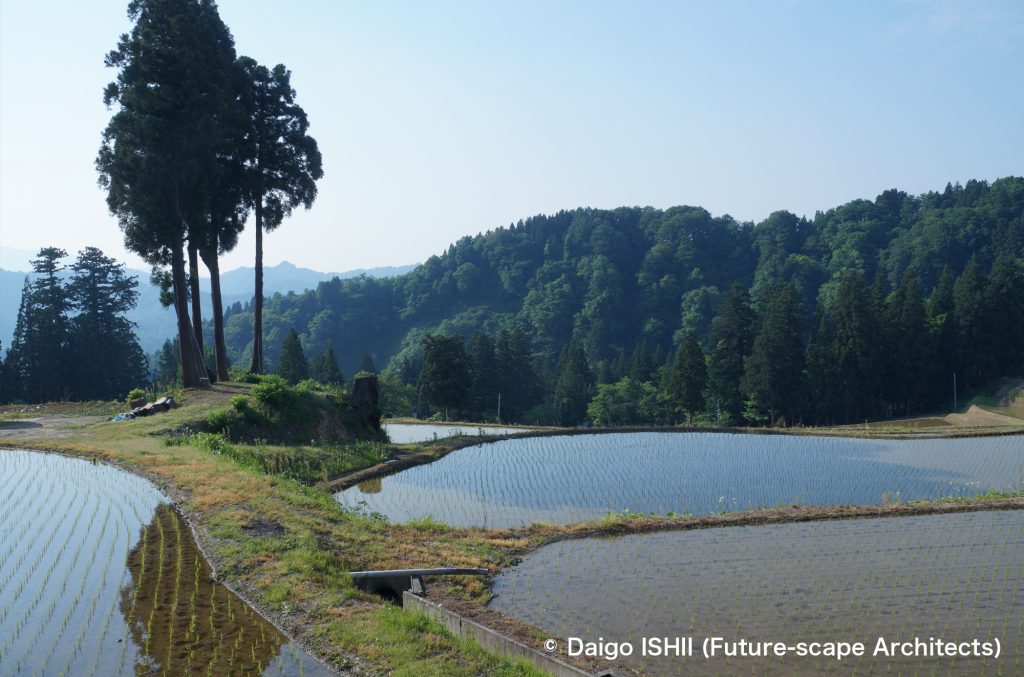
https://goo.gl/maps/tb4K8fGiwYRcjniKA
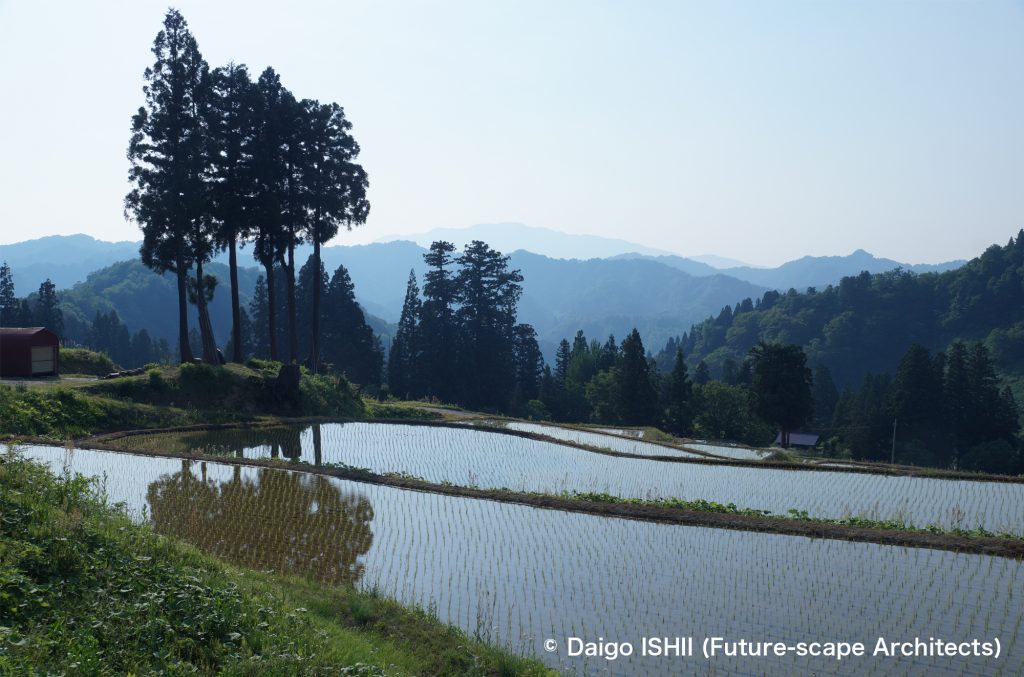
https://goo.gl/maps/uMsJTkVHQ1tEDnKZ6
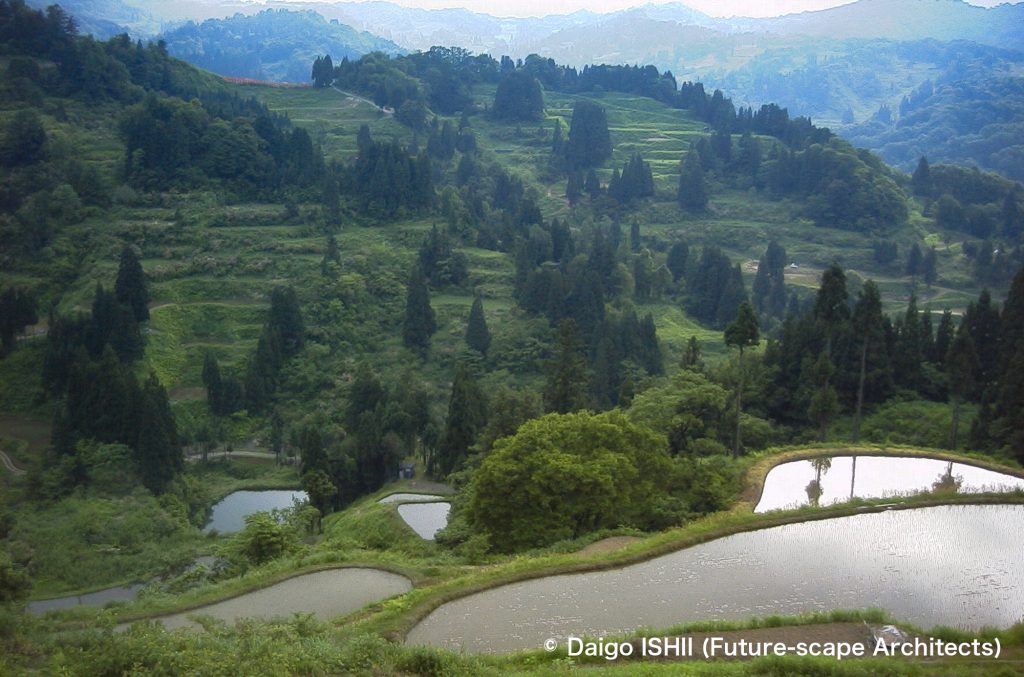
https://goo.gl/maps/cP3s5tb3sM1XiaNt9
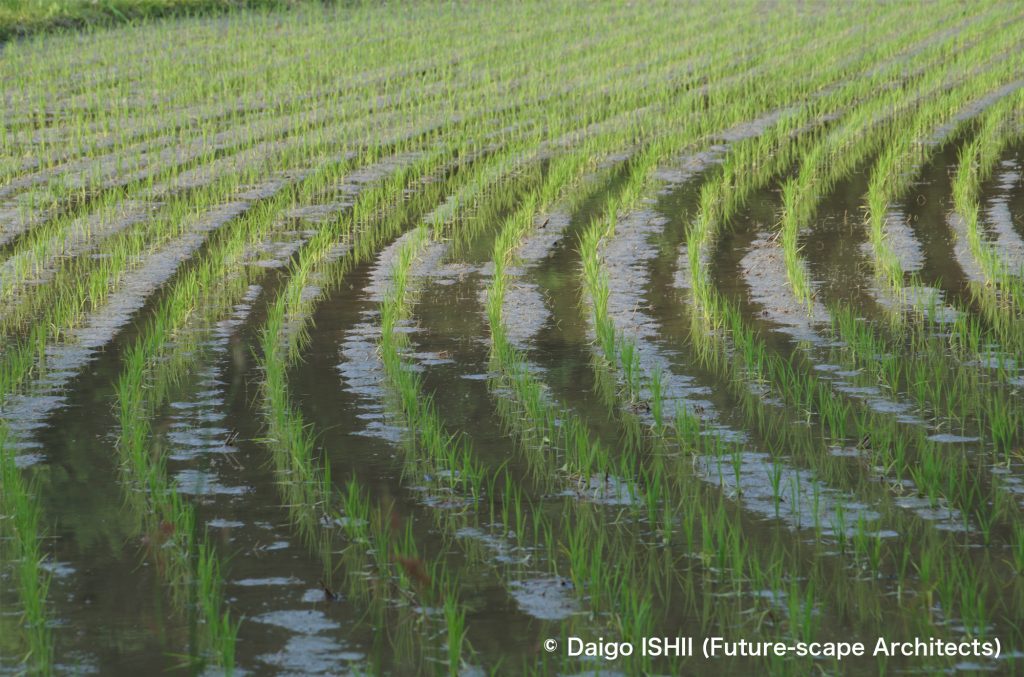
Late July
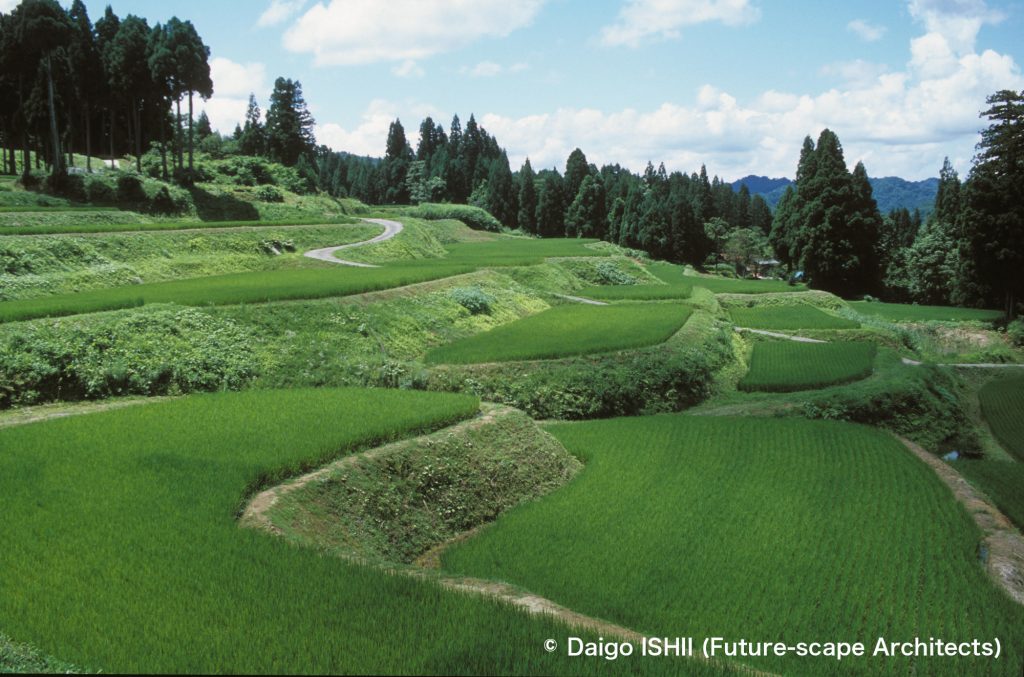
https://goo.gl/maps/tb4K8fGiwYRcjniKA
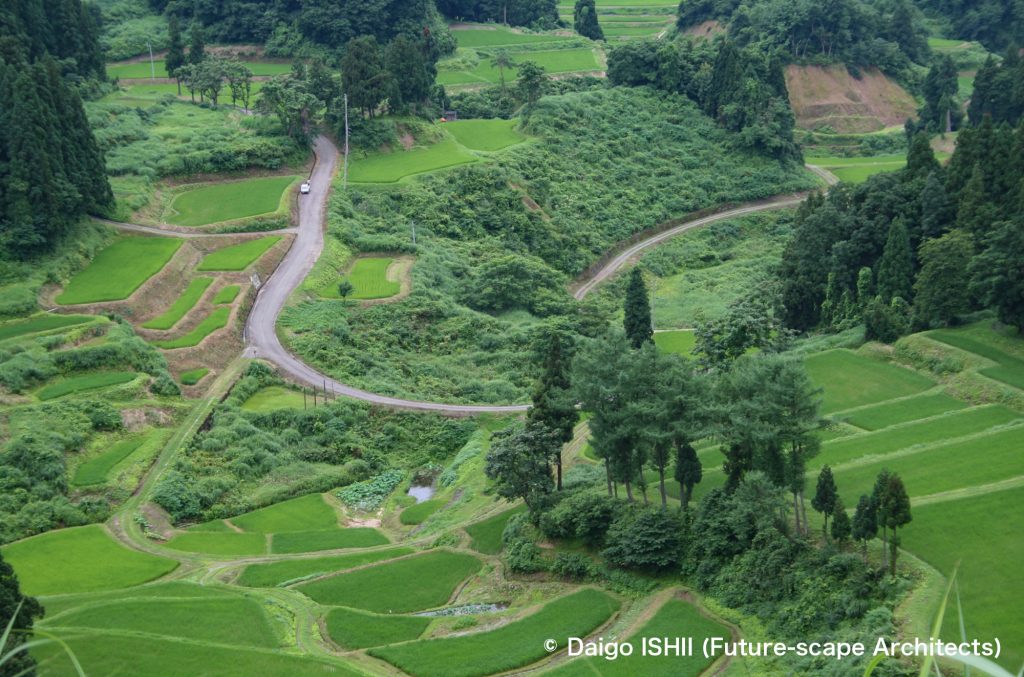
https://goo.gl/maps/kvFuSbfQv18JSJLr5
Late August
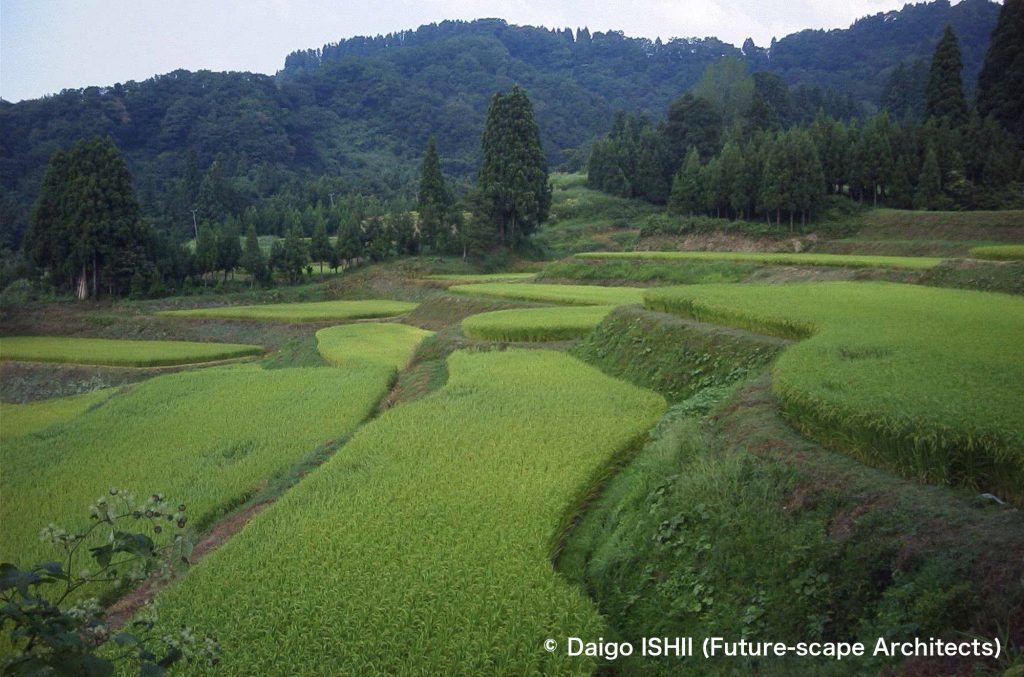
https://goo.gl/maps/tb4K8fGiwYRcjniKA
Early September
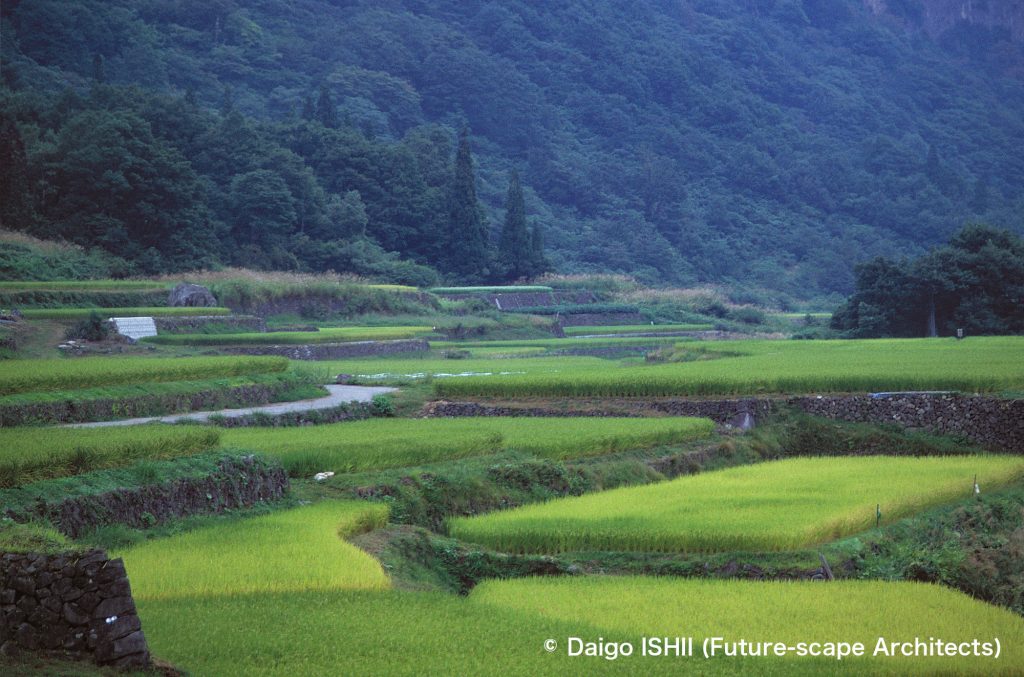
https://goo.gl/maps/5GCvVBPVBcA6bDNC9
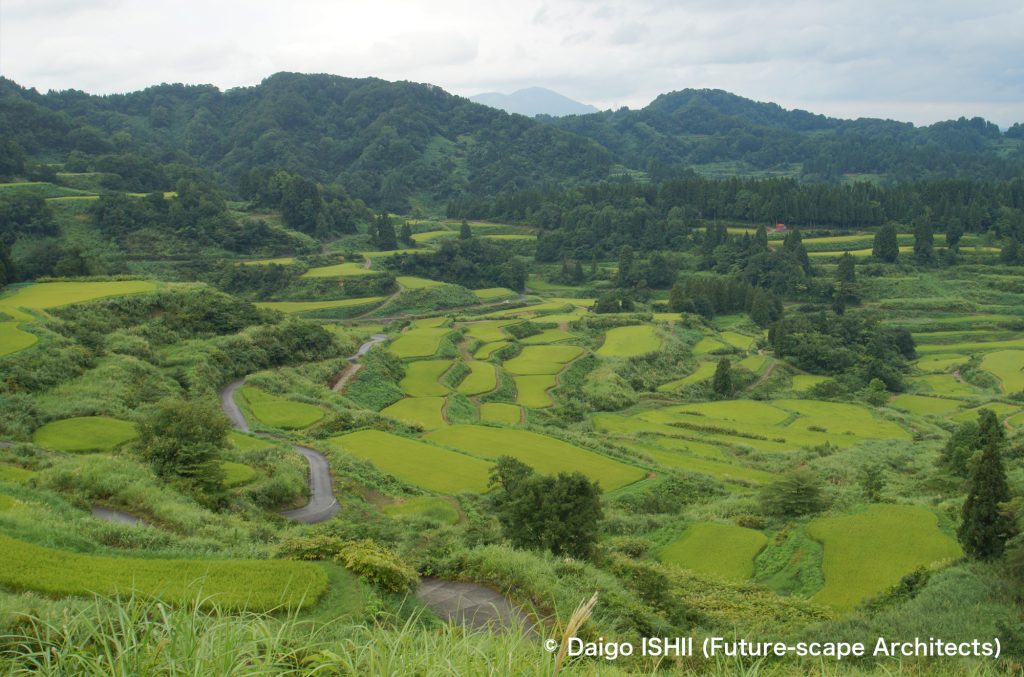
https://goo.gl/maps/HLrw7rom6CQtnEZF8
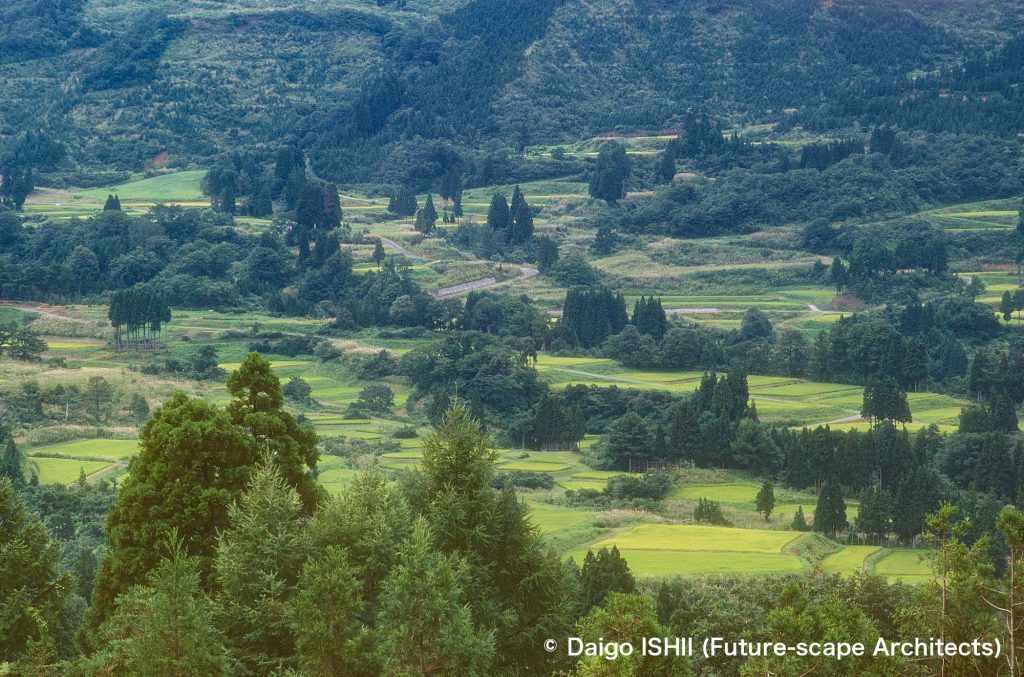
https://goo.gl/maps/9Bmz95raqUStN6Mc8
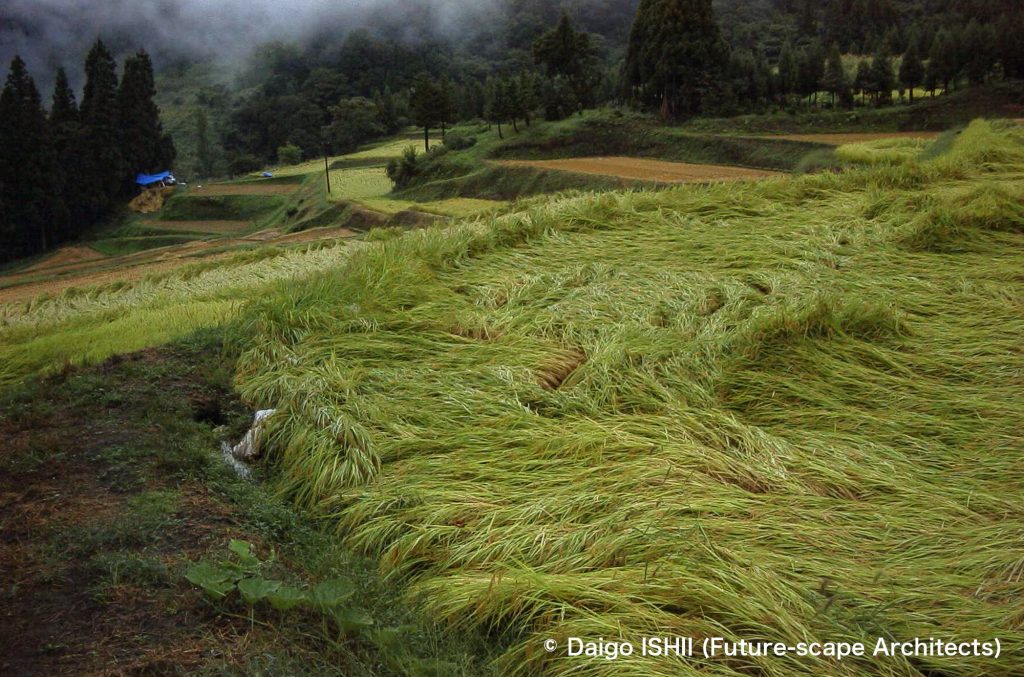
https://goo.gl/maps/tb4K8fGiwYRcjniKA
Mid September
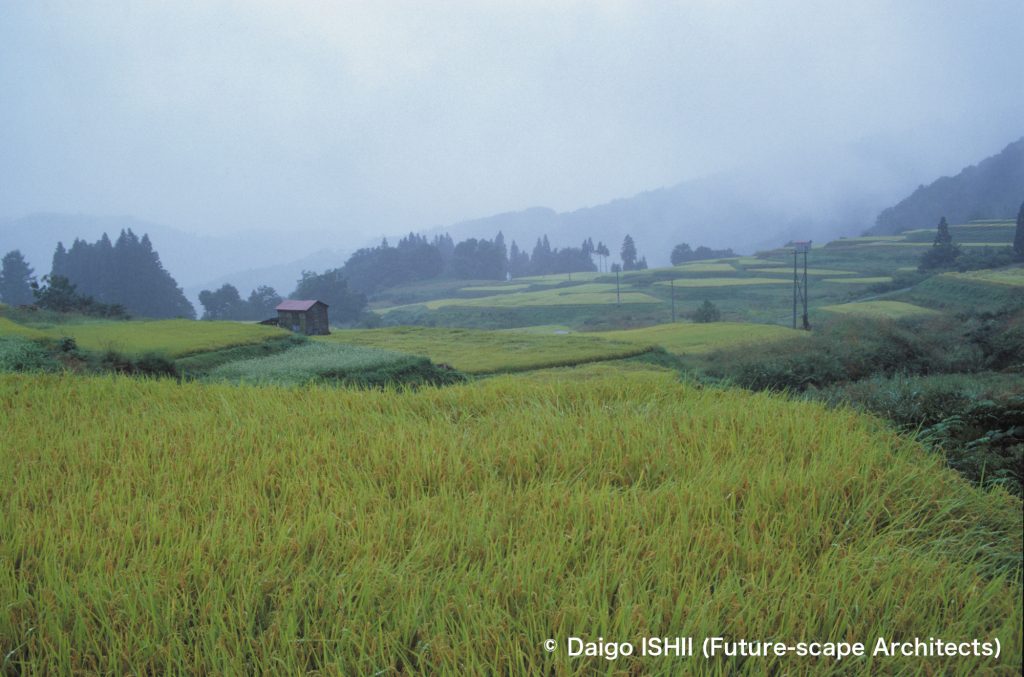
https://goo.gl/maps/9Bmz95raqUStN6Mc8
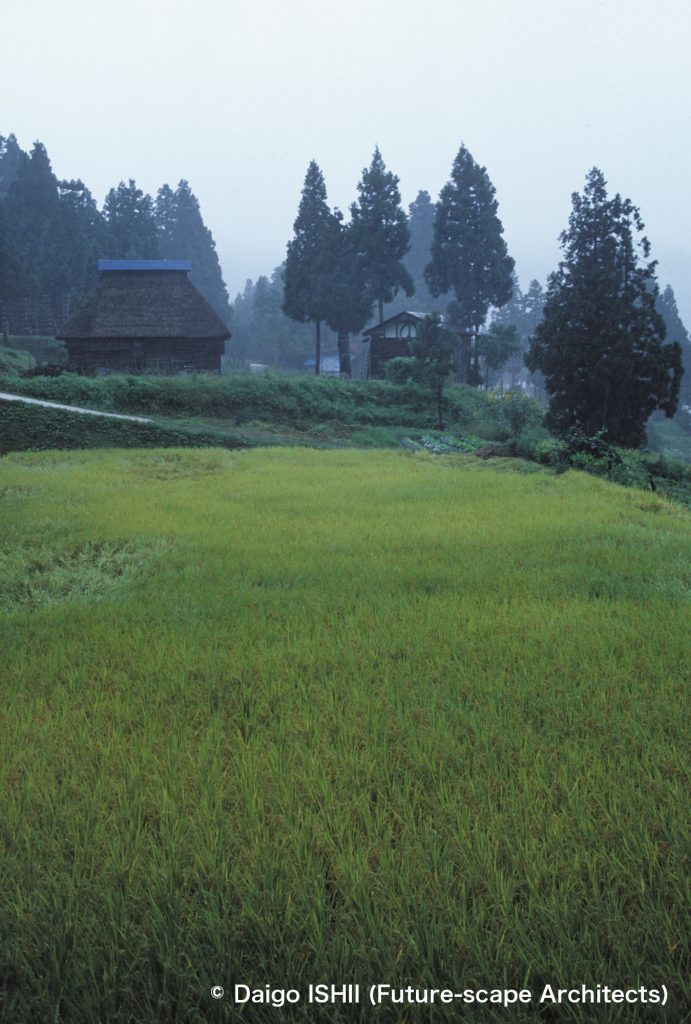
https://goo.gl/maps/8YwDwyntuDGqh97e8
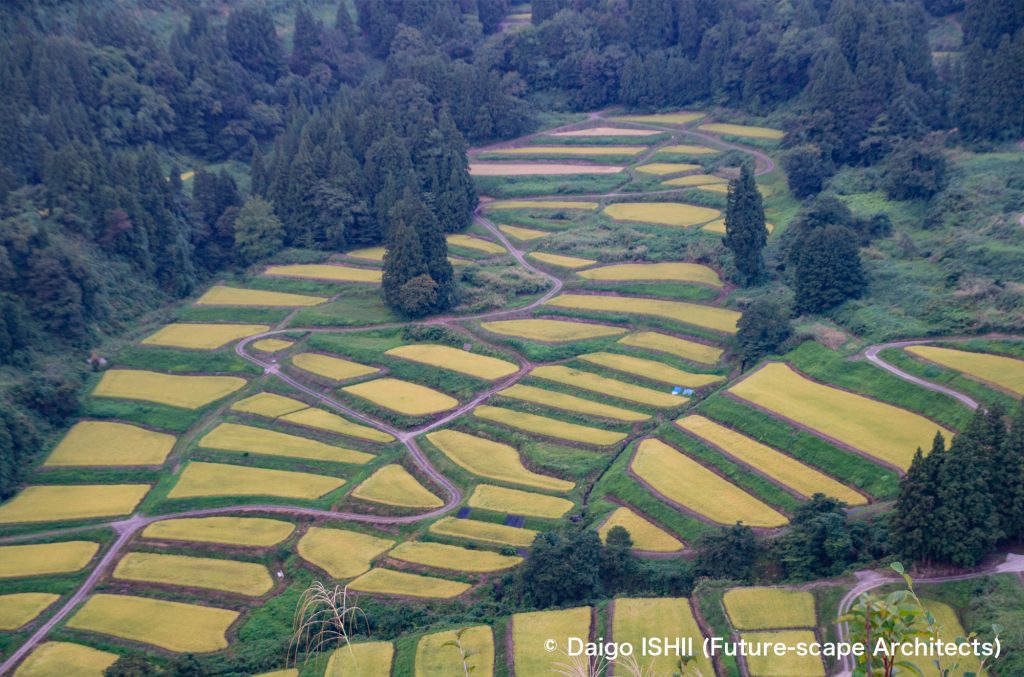
https://goo.gl/maps/Zi8Efr7AjeUJXUVu5
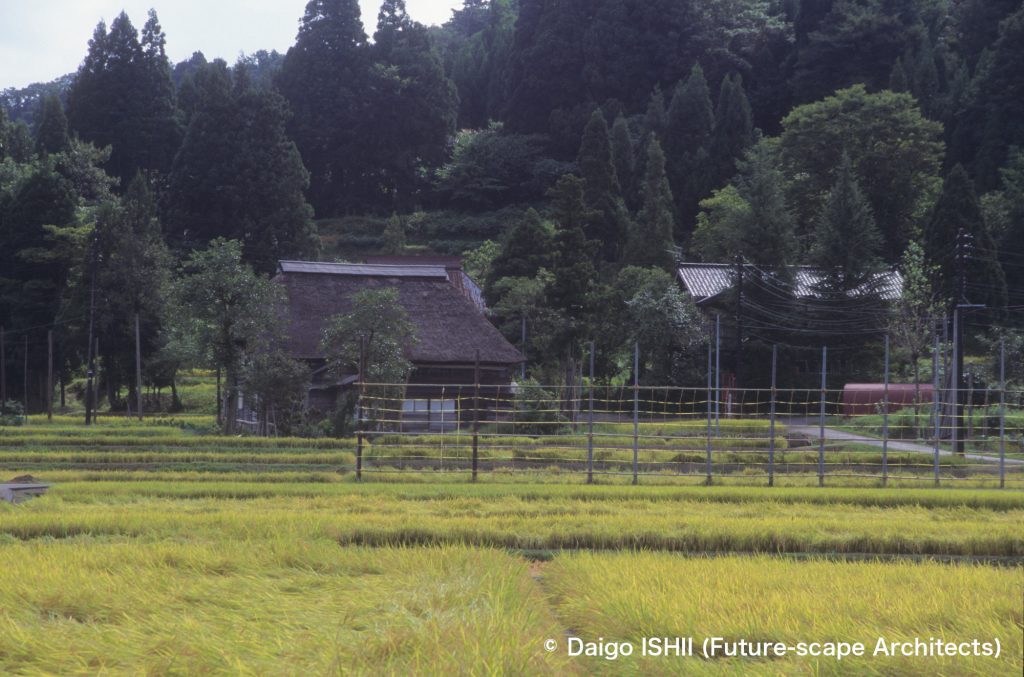
https://goo.gl/maps/a2MnEknq9srwpQMWA
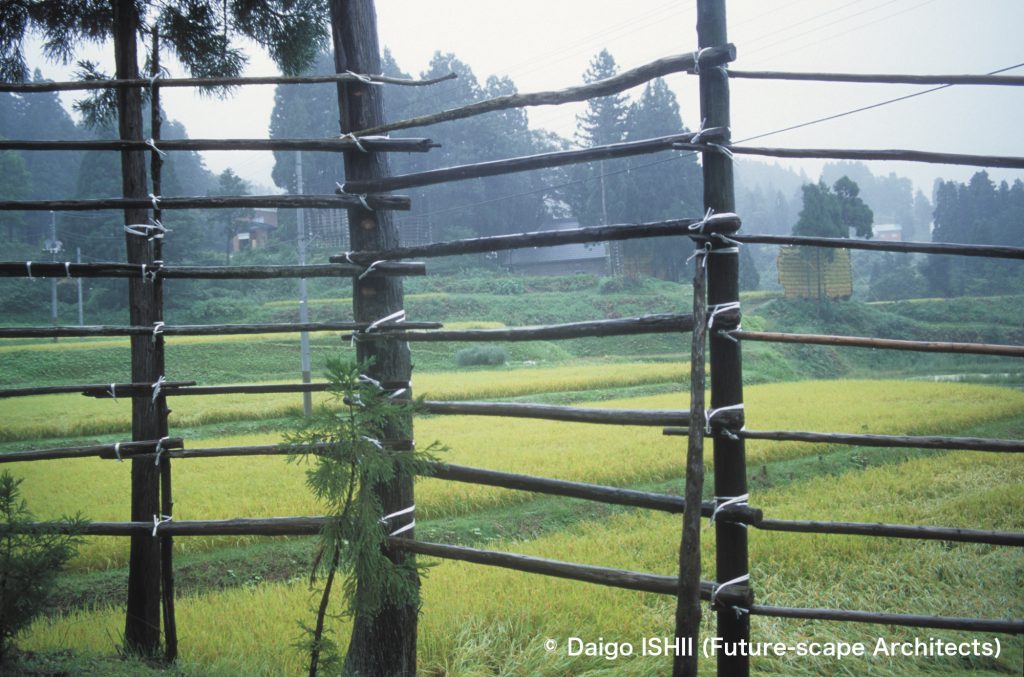
https://goo.gl/maps/kFt8wx4R1jwyzjcs6
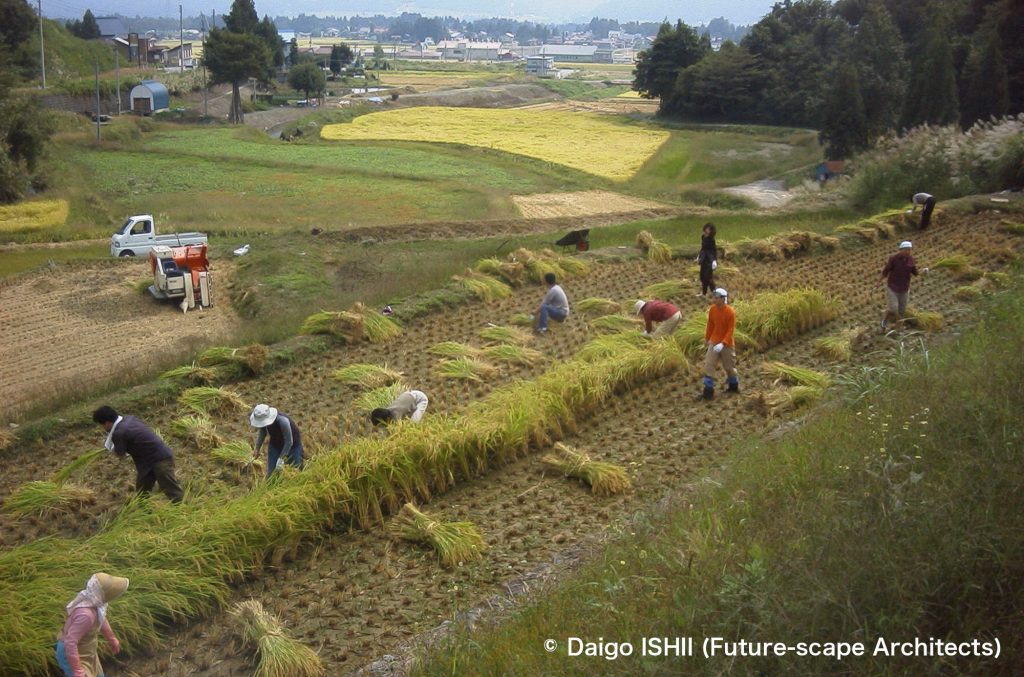
https://maps.app.goo.gl/MJ2umorWVgwFZxW9A
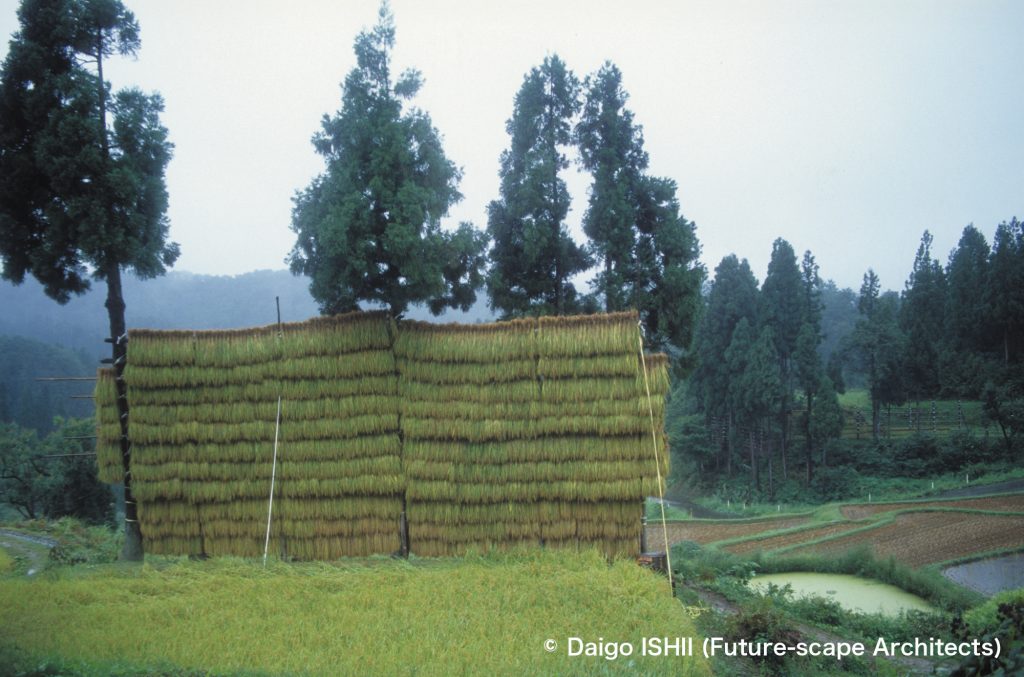
https://goo.gl/maps/kFt8wx4R1jwyzjcs6
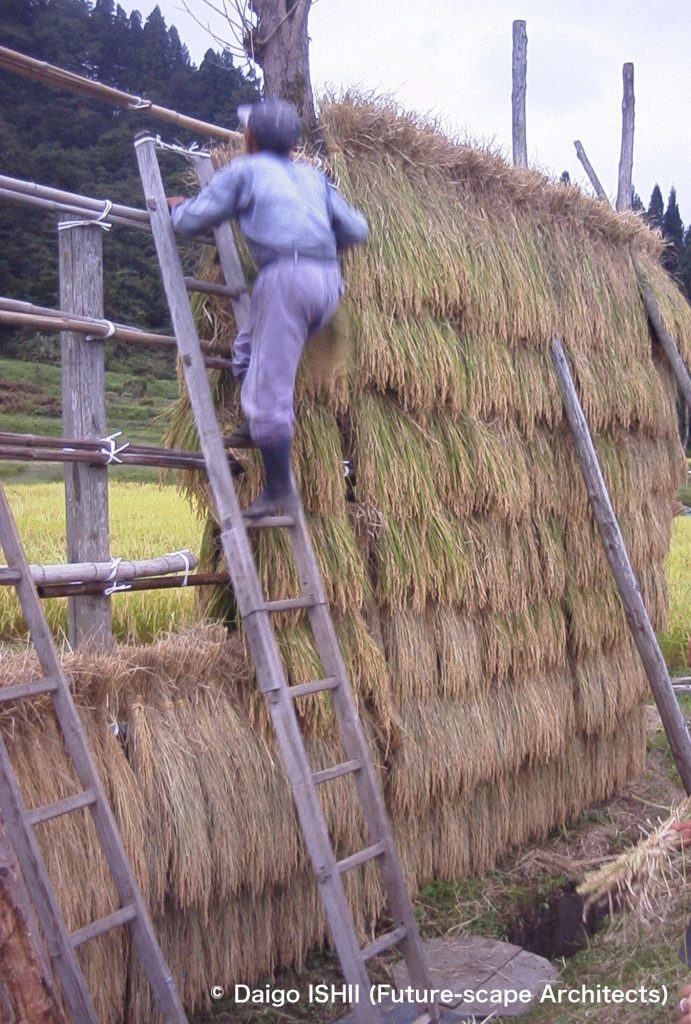
https://goo.gl/maps/5c792RoEcKC5gqkF8
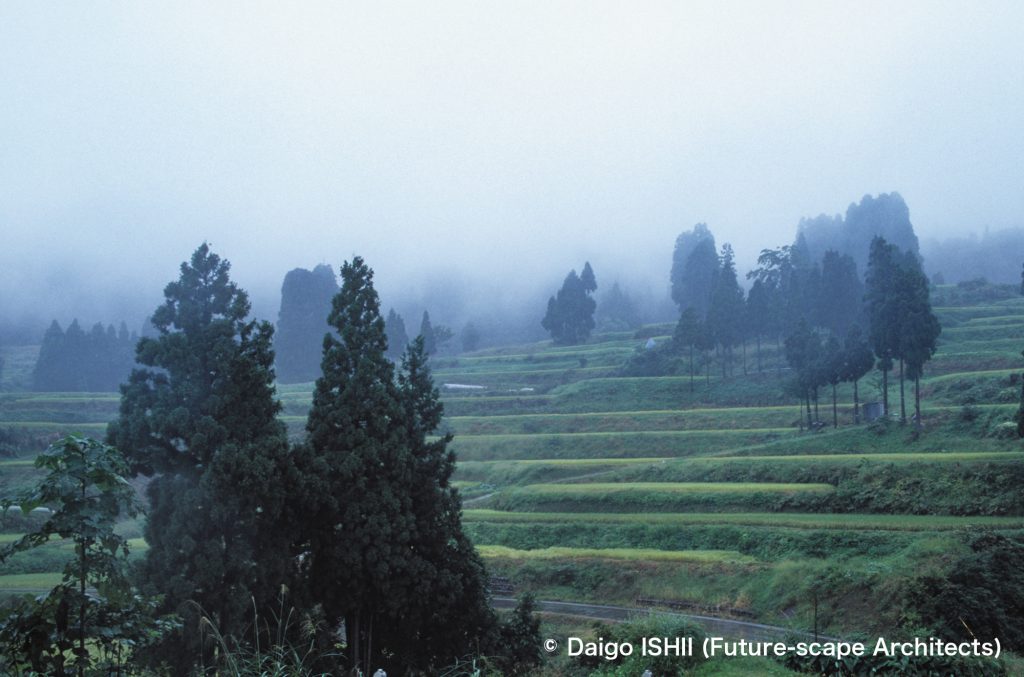
https://goo.gl/maps/5c792RoEcKC5gqkF8
Mid January
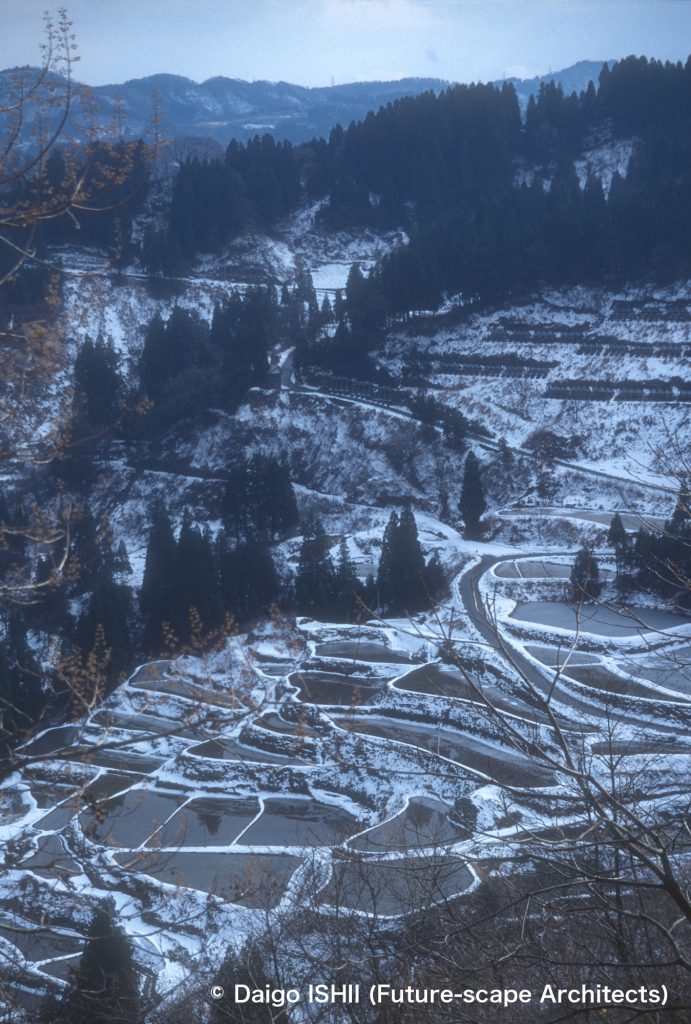
https://goo.gl/maps/YrEFB6KYGSHzVtvg6
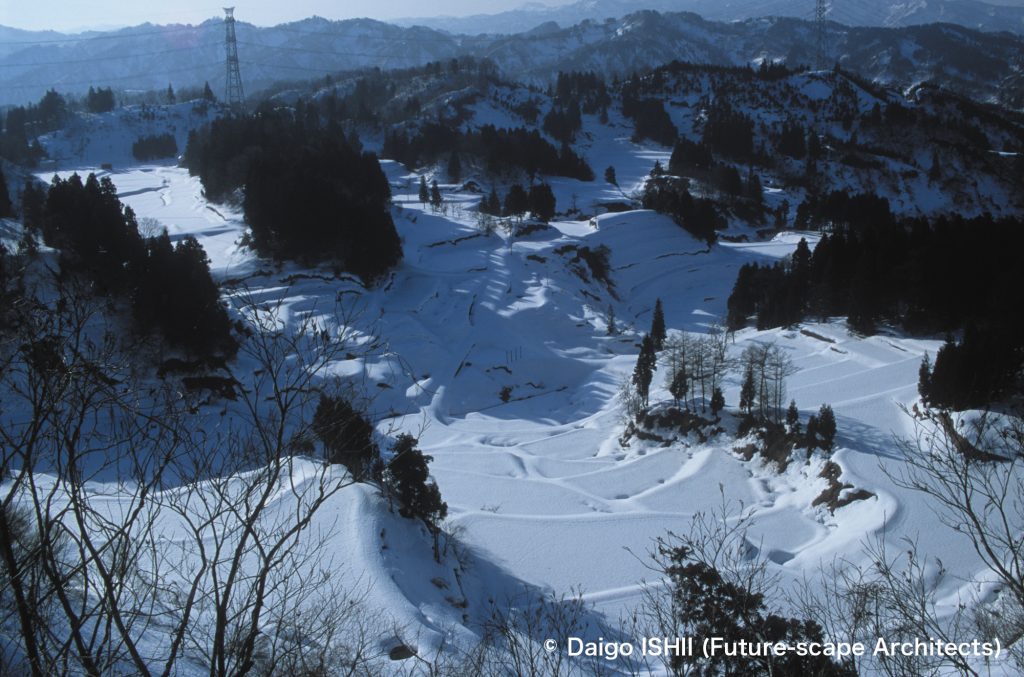
https://goo.gl/maps/kvFuSbfQv18JSJLr5
Click here for your impressions
reference
Wikipedia
"たんぼ めぐる季節の物語"(ジョニー・ハイマス,NTT出版,1994)
"越後妻有アートネックレス整備事業計画書"(アートフロントギャラリー,1999)
Please do not use or upload our photos without permission.




